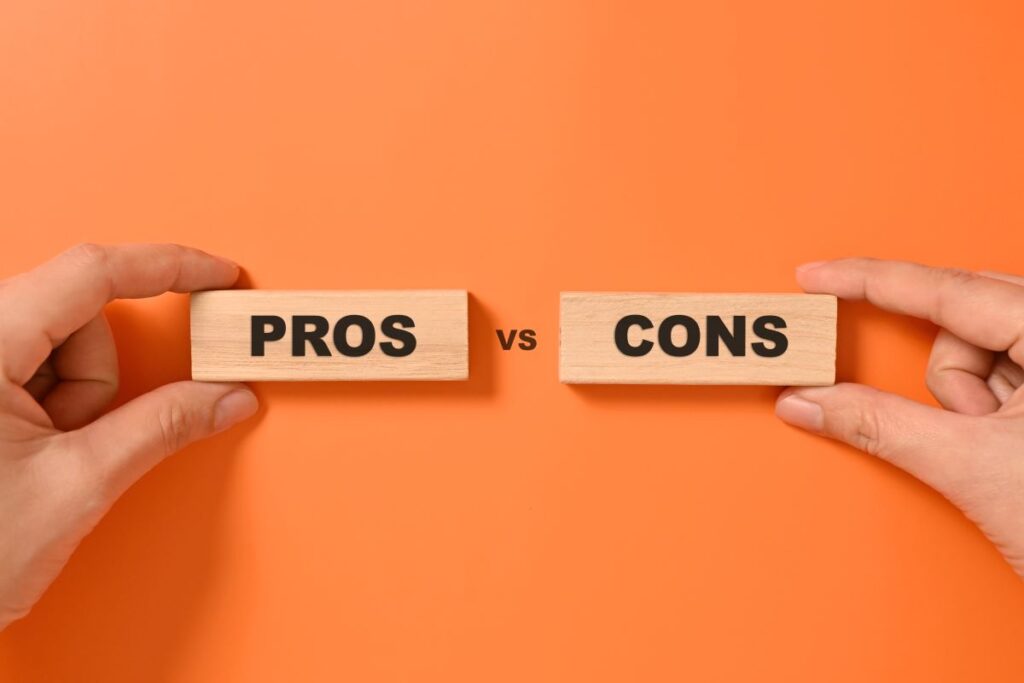When you read a Book Review Summaries article online, it is supposed to help you decide whether a book is worth your time. Unfortunately, not every review is as objective as it seems. Many reviews are influenced by personal opinions, hidden agendas, or promotional interests. Understanding how to spot bias in a book review is crucial if you want to make your own informed reading choices.
In this guide, we will explore practical strategies to identify bias, explain why book review summaries can sometimes be misleading, and show you how to critically approach them. By the end, you will not only recognize bias but also use reviews more effectively to enhance your reading experience.

Why Bias Exists in a Book Review
Bias in a Book Review Summaries often comes from the reviewer’s personal preferences, external motivations, or cultural background. Understanding why bias appears can help you better interpret the review.
Common Sources of Bias:
- Personal Taste – A reviewer who dislikes fantasy might rate every fantasy novel poorly, even if the book is considered a masterpiece by others.
- Promotional Influence – Some reviews are sponsored or written with the goal of selling books rather than providing genuine insight.
- Cultural or Political Views – A reviewer’s background may shape how they interpret certain themes or characters.
- Reader Expectations – If a book doesn’t match what the reviewer expected, their judgment may seem harsher than necessary.

Signs of Bias in a Book Review
Spotting bias requires careful reading. Pay attention to the language, structure, and tone of the review.
Red Flags to Watch Out For:
- Excessive Praise or Criticism – Reviews that describe a book as “flawless” or “completely worthless” without balanced reasoning.
- Lack of Evidence – Opinions stated without citing specific examples from the book.
- Overemphasis on the Author – Focusing more on the author’s reputation rather than the book’s content.
- Comparisons Without Context – Comparing the book unfairly to unrelated works or genres.
Here is a simple table summarizing the difference between a biased and objective review:
| Aspect | Biased Review Example | Objective Review Example |
|---|---|---|
| Tone | “This is the worst book ever written.” | “The pacing felt slow, especially in the middle.” |
| Evidence | “The characters were bad.” | “The protagonist lacked development compared to side characters.” |
| Focus | “The author always writes boring stories.” | “The book’s plot struggled to maintain suspense.” |
| Balance | No strengths mentioned | Both strengths and weaknesses highlighted |

How to Critically Read Book Review Summaries
Not every review is worthless, even when bias is present. The key is learning how to read Book Review Summaries with a critical mindset. Instead of passively accepting what the reviewer says, question their reasoning.
Practical Tips for Critical Reading:
- Look for Specific Evidence – Do they provide quotes or page numbers? A solid review backs opinions with text from the book.
- Check the Balance – Does the reviewer highlight both strengths and weaknesses? Balanced reviews are less likely to be biased.
- Analyze the Language – Emotionally charged words may reveal more about the reviewer’s feelings than the book’s quality.
- Identify the Reviewer’s Perspective – Knowing if the reviewer is a casual reader, academic, or professional critic helps you understand their angle.

Why Comparing Multiple Book Review Summaries Matters
Relying on one review is like listening to a single witness in a trial. To get the full picture, you should read multiple Book Review Summaries. Each reviewer brings a unique perspective, and comparing them helps you filter bias.
Here’s a table that explains why multiple reviews are more reliable:
| Number of Reviews Considered | Reliability Level | Potential Outcome |
|---|---|---|
| One | Very Low | Risk of adopting one person’s bias |
| Two to Three | Moderate | Balanced view with a few differing perspectives |
| Five or More | High | Clear consensus emerges, bias becomes easier to detect |
This approach not only helps you recognize bias but also improves your understanding of the book before reading it yourself.
When Book Review Summaries Become Misleading
Sometimes reviews do more harm than good. A summary might simplify the content so much that it leaves out important context or themes. Worse, some reviewers intentionally shape their summaries to either promote or criticize a book unfairly.
For example:
- A positive but shallow summary may hide weaknesses like weak character development.
- A negative summary might ignore strengths such as cultural impact or literary style.
This is why readers should treat book review summaries as guides, not final verdicts.
Connecting Bias with the Value of Classic Literature
Bias is not only present in modern reviews; even classics are judged through different lenses depending on the reader’s background. This is why many people continue to ask: Why Are Classic Books Still Relevant Today?
Classic literature often receives polarized reviews because readers approach it with different expectations. While some may praise its timeless wisdom, others may criticize it for being outdated. Recognizing this pattern helps modern readers understand that bias is universal across time periods.
Why Do People Prefer Reviews Over Summaries?
One of the most debated aspects in the world of reading is whether to rely on a full review or just a summary. Many readers lean toward Book Review Summaries because they want quick insights without spoilers. However, others strongly prefer reviews because they offer context, depth, and the reviewer’s personal perspective.
For deeper understanding, here’s our detailed guide on Why Do People Prefer Reviews Over Summaries?. In it, you will see how reviews shape reader decisions far more effectively than summaries alone.
Actionable Strategies to Avoid Bias in Book Review Summaries
If you are a reader who depends on reviews before buying or borrowing a book, learning to filter bias is a valuable skill. Below is a step-by-step checklist you can use every time you come across a review.
Step-by-Step Checklist for Spotting Bias:
- Check the Reviewer’s Credentials
- Is the reviewer a casual reader, a critic, or someone affiliated with the publisher?
- Look for Balanced Language
- Does the review highlight both pros and cons, or only focus on one side?
- Scan for Evidence
- Are opinions backed with actual examples from the book?
- Compare with Other Reviews
- Read at least three different Book Review Summaries to spot inconsistencies.
- Identify Emotional Language
- Words like “terrible,” “amazing,” or “life-changing” should be supported by reasons.
- Watch for External Motivation
- If the review contains affiliate links or sales-heavy language, the purpose may be promotional.

Biased vs Unbiased Phrasing in Book Review Summaries
The way a reviewer phrases their thoughts can reveal hidden bias. Here’s a comparison table to help you identify differences:
| Biased Phrasing | Unbiased Phrasing |
|---|---|
| “This is the worst book I have ever read.” | “The plot had pacing issues, especially in the middle.” |
| “Everyone should avoid this book.” | “Some readers may struggle with the author’s style.” |
| “This book is flawless.” | “The book excels in character depth, though the ending feels rushed.” |
| “Only a genius would like this.” | “This book will likely appeal to readers who enjoy complex narratives.” |
Why Readers Should Mix Reviews and Summaries
The smartest approach is to use both reviews and summaries together. Summaries give you a quick overview of the book’s main themes, while reviews provide context and opinions that highlight possible strengths or weaknesses. When you combine both, you minimize the risk of falling into the trap of a biased opinion.
Case Study: Biased vs Objective Review
To clearly see the difference, let’s take an example of a popular novel. Suppose a mystery thriller receives two different reviews:
Biased Review Example:
“This book is a complete waste of time. The characters are boring, and no one should ever read it.”
Objective Review Example:
“The story builds suspense well in the beginning, but the pacing slows down in the middle chapters. The protagonist is engaging, though some side characters lack development.”
This comparison shows how objective reviews give readers usable information to decide for themselves, while biased ones simply push a single viewpoint.
Conclusion
Reviews will always carry some level of subjectivity because they reflect human perspectives. The goal is not to avoid them completely, but to learn how to read critically and separate opinion from fact. By recognizing signs of bias, comparing multiple voices, and questioning the reviewer’s approach, you empower yourself to make smarter reading choices.
In the end, reviews are valuable tools when used wisely. Instead of letting one opinion decide for you, use them as part of your decision-making process alongside summaries, sample chapters, and personal preferences.

How can I tell if a review is biased?
You can identify bias by looking for emotionally charged language, lack of specific examples, or reviews that only highlight either positives or negatives without balance.
Why is it important to compare multiple reviews?
Comparing different reviews gives you a fuller picture of the book. It allows you to spot patterns, balance out strong opinions, and make a more informed choice.
Are professional critics less biased than casual readers?
Not necessarily. Professional critics may still carry biases based on their preferences or industry trends. The difference is that they often provide more context and evidence to support their views.
Should I trust sponsored reviews?
Sponsored reviews can be useful, but they should be read carefully. If a review includes promotional links or overly positive language, consider it with caution and look for independent opinions as well.
What is the best way to use reviews before buying a book?
Use reviews as a guide, not as the final verdict. Combine insights from reviews with summaries, sample chapters, and your own reading interests to make the best decision. You can also explore community feedback on platforms like Goodreads to see a wide range of reader opinions.

